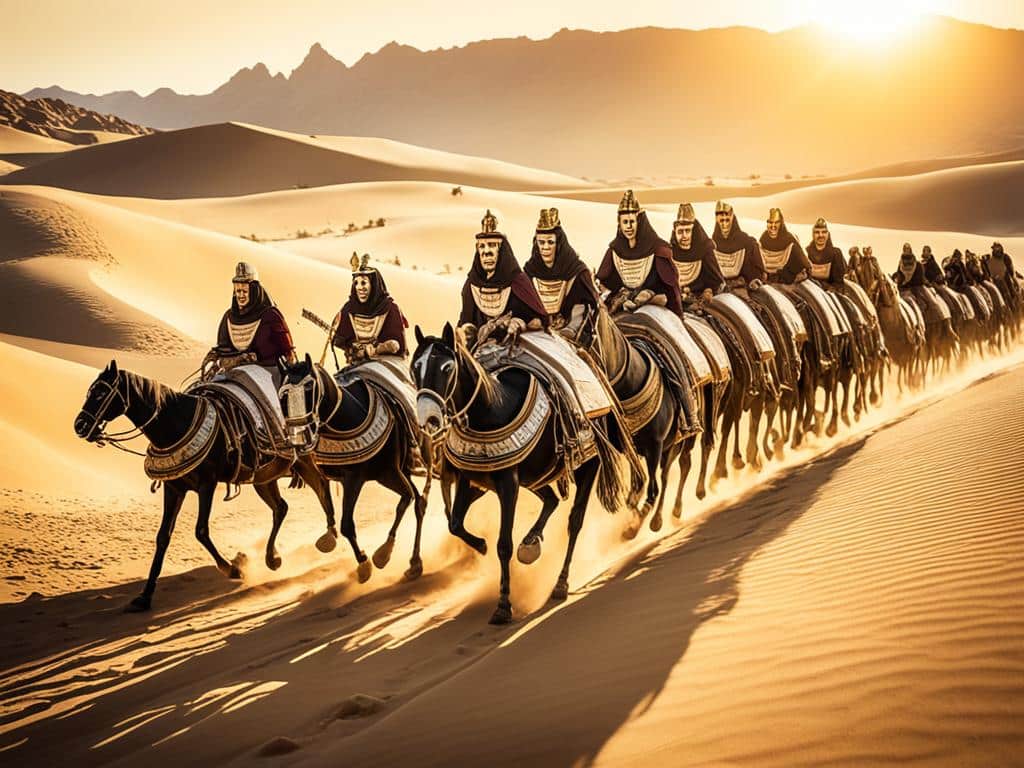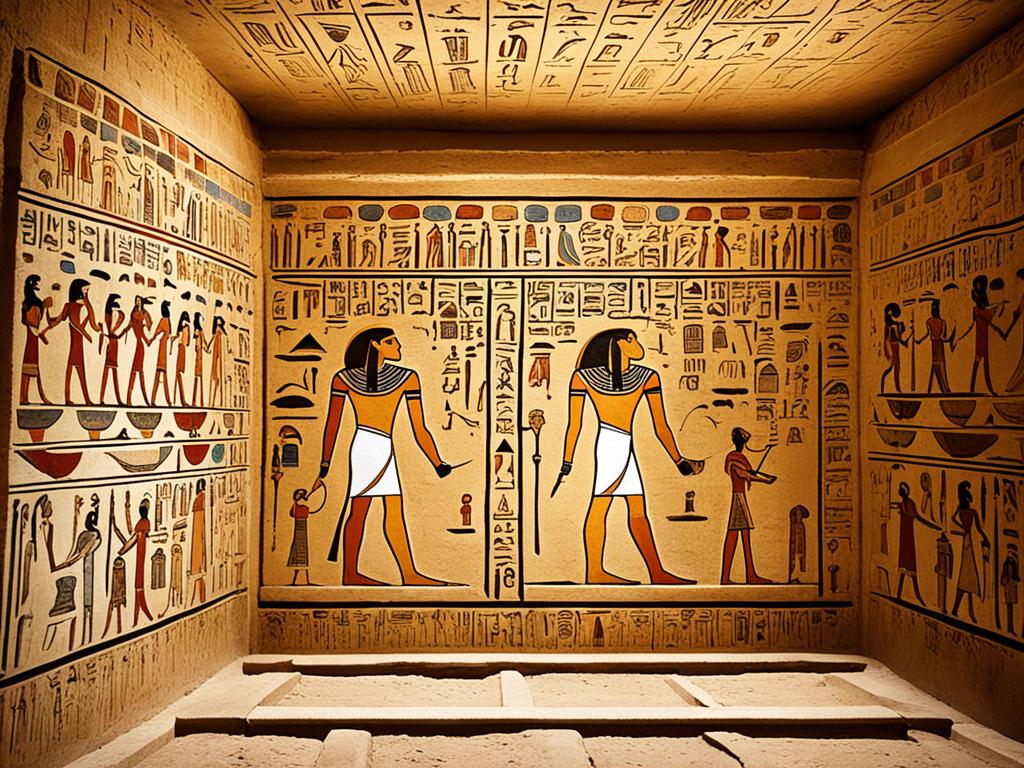Adverts
Welcome to the fascinating world of mummies. In this series of articles, we will explore the incredible story behind the preservation of life after death, through the famous Egyptian mummies. Let's uncover the mummification rituals, the techniques of conservation of corpses and dive into culture of Ancient Egypt.
To the Egyptian mummies They are archaeological treasures that impress us to this day. They tell us stories of an ancient people who believed in eternity and the continuation of life after death. The preservation of bodies through mummification was a vital practice in Egyptian culture, and we will discover how it was accomplished.
Adverts
The ancient art of mummification involved complex rituals and careful preparation of bodies. The Egyptians believed that by preserving the bodies, the souls of the deceased would be able to live eternally. The secrets of this practice were kept for centuries, but the funerary archeology allowed us to unravel the mysteries behind the conservation of corpses.
Join us on this exciting journey through the history of Egyptian mummies. Explore with us the wonders of Ancient Egypt and discover how ancient culture influenced the modern world. Prepare to be amazed by the preservation of life after death and share our fascination with the incredible story of mummies.
Adverts
Egyptian Mummies and Body Preservation Techniques.
In Egyptian Antiquity, the preservation of bodies was an essential practice to guarantee life after death. The Egyptians developed advanced mummification techniques, involving complex rituals that played a crucial role in their culture and religion.

Egyptian mummies are a notable example of how the ancient Egyptians went to great lengths to preserve the bodies of their loved ones. They believed that physical preservation was essential for the preservation of the soul in the afterlife.
You mummification rituals involved several meticulous steps. First, internal organs, such as the brain, were removed to prevent rapid decomposition of the body. Then the body was dehydrated using natural salts such as natron. After dehydration, the body was cleaned and covered with oils and resins to protect the skin.
To the body preservation techniques adopted by the Egyptians were extremely advanced for the time. They had a deep knowledge of anatomy and used methods that guaranteed the stability of the body for millennia.
An interesting aspect of Egyptian mummification was the concern with maintaining the natural appearance of the dead. The Egyptians made plaster casts of the faces of the deceased and placed them over funeral masks, so that their facial features were preserved.
Mummification techniques have become increasingly refined over time. During the New Kingdom, for example, the viscera were left in the body and only the brain was removed. This technique was possible thanks to the belief that the heart was the organ responsible for thought and emotion, while the brain was of little importance.
Mummification Mysteries
Egyptian mummification awakens fascination and, at the same time, many mysteries. How did the Egyptians acquire and improve their knowledge about preserving bodies? How were they able to perform such complex procedures at a time when medicine was still primitive?
These questions continue to intrigue archaeologists and scholars to this day. The discovery of tombs and mastabas (royal tombs) in the Valley of the Kings, for example, has revealed impressive details about mummification practices, but there is still much to be uncovered.
Before modern body conservation techniques, Egyptian mummification was considered one of the most effective in the entire ancient world. The preservation of bodies allowed the culture of Ancient Egypt to be studied and admired by future generations, leaving a lasting legacy.
Funerary Archaeology: Uncovering the Secrets of Mummies.
A funerary archeology plays a key role in the discovery and understanding of Egyptian mummies. Through meticulous excavations and detailed studies, archaeologists have revealed fascinating secrets and mysteries about the preservation of life after death that were practiced in Ancient Egypt.
You mummification rituals they involved a complex sequence of processes designed to guarantee the preservation of bodies. Thanks to archaeological discoveries, we now know that these rituals included the removal of internal organs, dehydration of bodies, and the application of embalming substances. These meticulous practices ensured the conservation of corpses for centuries or even millennia.
Archaeologists have also found evidence that the Egyptians believed in an afterlife. Royal tombs, like Tutankhamun's, were equipped with personal effects and supplies needed for the journey after death, such as food, clothing, and tools. These discoveries reveal the importance that the ancient Egyptians attached to preserving life and preparing the dead for life in the afterlife.

“Funeral archeology allows us to come into direct contact with ancient civilizations and offers us an intimate view of their beliefs, practices and rituals related to death and the afterlife.” – Dr. Antônio Silva, archaeologist specialized in Ancient Egypt
Studies carried out by archaeologists, combined with advances in non-invasive analysis technologies, have provided a deeper understanding of Egyptian mummies. Through x-rays and computed tomography, it is possible to explore the inside of these preserved bodies without the need to damage the external bandages.
Corpse Conservation: An Ongoing Challenge
The adequate conservation of mummies is a constant concern for professionals who study funerary archeology. Exposure to light, humidity and extreme temperature variations can lead to accelerated deterioration of embalming fabrics and materials.
With the aim of preserving Egyptian mummies for future generations, museums around the world apply modern conservation techniques. Environmental control, such as maintaining temperature and humidity controlled rooms, is essential to protect these fragile artifacts.
- Monitor the condition of mummies on display regularly.
- Carry out conservation treatments, such as removing salts and unwanted materials.
- Implement safety measures to prevent accidental damage.
Funerary archeology continues to uncover the secrets of Egyptian mummies and enrich our knowledge of the culture of Ancient Egypt. Each discovery and study contributes to a deeper understanding of the preservation of the afterlife and the legacy left by this fascinating civilization.
Conclusion.
After exploring the incredible story of mummies Egyptians and get to know the body preservation techniques used in Egyptian antiquity, the importance of these artifacts in the culture and religion of Ancient Egypt is evident. The mummies offer a fascinating glimpse into the Egyptians' belief in preserving life after death.
Through mummification rituals, the ancient Egyptians believed they could ensure the continuity of life beyond the grave. They dedicated time, resources and knowledge to ensure the mummification process was carried out perfectly, in the hopes of achieving immortality.
Funerary archeology played a crucial role in discovering and understanding Egyptian mummies, revealing secrets and mysteries about preserving the afterlife. These discoveries allowed us to delve into history and understand the culture and customs of the Egyptian Antiquity.
In short, Egyptian mummies are valuable treasures that provide us with an impressive insight into how preserving the afterlife was an essential part of Egyptian society. Its history and preservation techniques continue to intrigue and fascinate people around the world, making us aware of the enduring allure of the ancient Egyptian civilization.
